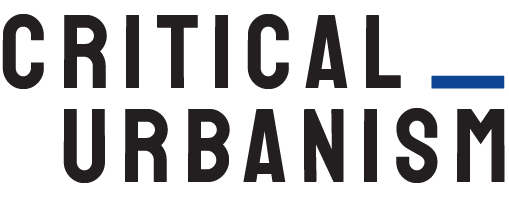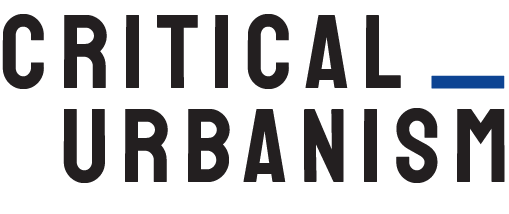
Emerging Urban Researchers on the Participatory Dimension of their Work
Johanna Betz
Research Associate within the project Common public goods - The political organization of infrastructure provision in the regulatory state, Institute of Political Science, University of Tübingen

As a housing researcher, I am part of a discursive struggle in a highly contested, ideological and power-saturated sphere that lies at the center of the political economy. Participatory research, as well as critical applied urban studies, for me go hand-in-hand with challenging established academic routines and building up long-term complicities with marginalized populations, people that find themselves in precarious housing conditions, and with social movements and to work together with these people on problems identified by them. Taking these problems and struggles as a starting point, this kind of research aims to produce results that can be communicated to a broader public (Thurber et al. 2020) and to cooperatively elaborate options of action for political initiatives (Vollmer 2018). It can also serve to “collapse the distance” between everyday practices and processes like financialization, which are often perceived as abstract and distant (Fields 2017). Being located on the intersection of research and activism, it opens a stage to creatively elaborate and apply a diverse set of methodologies and approaches. Some of them – like “critical legal engineering” (Kusiak 2021) – have a radical potential, but are novel and still need to be conceptualised more firmly.
Action research in the field of housing justice in Germany can be found in Berlin: as an example one might cite the case of tenants in former social housing units in Kottbusser Tor, who were facing rising rents and fearing displacement, while at the same time experiencing a severe lack of house maintenance from the owner. In 2011, they started a later widely recognized protest movement – Kotti & Co – which also led to engaged research on the “Legend of Social Housing” (Holm et al. 2018) in Berlin and Germany (https://kottiundco.net/, http://www.nichts-laeuft-hier-richtig.de/). During the last few years in Germany, both participatory and critical applied research are becoming more visible and institutionalized (Kuge et al. 2020; Kuč/Einhoff 2020; Halder 2018; Schipper 2021), which is great news.


Mara Haas
Urban planner at Superwien Urbanism and Assistant at Department for Local and Urban Planning (Vienna University of Technology)
Reflecting on the experiences I have had over the last years as an urban planner and researcher (e.g. during the JPI Urban Europe project “PlaceCity – Placemaking for Sustainable, Thriving Cities” and “MetroLab”, participatory urban research for me does not just mean working in a trans- and inter-disciplinary team of representatives of the city, the private sector and the university. More importantly, it is our task as urban planners and researchers to find local allies that are willing to contribute with their own ideas, perceptions and desires, and thus bring in necessary local expertise. In so doing, there is a great potential that parts of the project will be adopted and established in the long term, after the funding period is over. Thus, finding and empowering local allies is one of the most important but challenging tasks, and one for which you should designate enough time and resources.


In the frame of the PlaceCity project, we aimed at testing and evaluating participatory and co-creative tools in order to strengthen and activate public spaces in the central area of Floridsdorf, a peripheral district of Vienna. After two and a half years of investigations, we discovered that the most effective means of getting in contact with and actively involving the local community and daily users of the space was – as simple as it may sound – to be present on the ground for a longer period of time. By organizing low-threshold community events, such as movie nights or a plant swap, we managed to also include groups who normally are not heard or seen in “conventional” participatory urban planning processes. Additionally, through an Open Call for ideas, we received around fifty concrete proposals from the neighborhood on how to alternatively use and (temporarily) redesign individual squares and street spaces in their living environment. After the funding period ends, the local library, as one of our local allies, is willing to take over the “Florum” – a piece of mobile furniture for public space that was developed as a result of the Open Call – and to take over responsibility for lending it to neighbors and supporting them in the organization of events in public space. For me, such tangible and longer-term project results are what we should strive for as urban researchers and planners, instead of just producing pretty maps and research reports (that mostly disappear into drawers anyway).
Oleksandr Anisimov
Independent researcher

For the last three years, I have been leading an urban research initiative on 4 blocks of late socialist urban heritage housing in the Podil district of Kyiv (Ukraine). I am conducting a series of interactive action research activities with citizens, and in particular with dwellers of this post-socialist housing estate. We have now applied for a GIZ-funded grant for a public space renovation, which will focus on an integrating heritage approach and tackle sustainability challenges at the same time.
In general, I feel there is an urgent need to involve architects in participatory research on the public spaces they design, as the glass wall between users and planners is still there as if modernism had not gone away. Too often, a self-defensive ‘expert’ approach collides with a total negligence and disrespect of users and stakeholders. The solution to this issue is obviously not more distancing, but rather more proximity and intensive dialogue. In my opinion, a continuous discussion on urban form and urban practices is the only way of governing changes in the built environment in a pluralist democratic society. This requires dedicated professionals from outside the design-implementation field, but who have a deep knowledge of legal issues and of urban design and planning issues. This type of role is still vacant and, in fact, is one of the most viable directions for educational programs and events.

Monika Pentenrieder
Researcher at the Institute of Human Geography, Goethe University Frankfurt/Main As I develop my research project on changes in everyday mobility, I look primarily at practices. This entails a shift in perspective from either focussing on individuals or structures as objects of research, to engaging with the interaction and integration of both. This approach allows me to include, gather and respect a range of individual and collective reflections on urban experiences. But rather than a safe and set path of methodological steps, to me a participatory approach means navigating through a forest of question marks. Who wants to be and is able to be involved? What is my role: an organizer of participation and collector of information? How will information be reflected and interpreted? Does participation mean representation? How are capacities (theoretical and practical expertise) and eventual findings distributed? Who, in the final account, is to determine whether research is really participatory?
Anika Schmidt
Helmholtz-Centre for Environmental Research, Department for Urban and Environmental Sociology

Participatory urban research, for me, is the attempt to include citizens in the problem definition, design, implementation and evaluation, as well as the dissemination of research. This also entails that we critically reflect on our understandings of “science” and “knowledge”. Overall, it means that the issues of research are not defined only by people from academia, but should be informed by needs and wants from within urban society, the neighborhood, etc. My notion of participatory urban research derives from my experience and reflections on my involvement in transdisciplinary research projects: in other words, in research that had project teams comprising of academic, municipal and civil society stakeholders. These projects involved participatory processes: i.e. they emerged through experimental interventions and joint problem identification. We applied an urban living lab approach – in the German context a specific approach called real-world labs – which puts an emphasis on the co-design and co-creation of a diversity of stakeholders attempting on an equal footing to deal with so-called real-world problems.
I see a lot of potentials as well as challenges to these formats of applied and participatory research with local stakeholders. These derive from the different roles and especially role ascriptions that underlie the cooperation and that need to be openly discussed to avoid misunderstandings. I have the impression that the special qualifications required to perform participatory and transdisciplinary research are rarely included in university curricula: equally, tools and approaches to support necessary critical reflections – be these personal or within project teams – are also frequently overlooked in university education. Also, the people involved need to acknowledge their position within the joint research: e.g. activists might take part personally, but they might also have certain expectations from their action network backgrounds; scientists need to fulfill the requirements of the research institutions that there are affiliated with; municipal stakeholders might be personally engaged but have to deal with regulations and underlying bureaucratic structures, etc. Thus, in such research all of these groups need to cross borders within the environments in which they are embedded. Furthermore, within participatory research, just as within participation in urban development, it should always be clear that a normative attempt to “include all” is utopian and accepted that people might have their own reasons and agendas to participate or not to participate. The potential that I see is that participatory and transdisciplinary research can serve a need to jointly discuss and critically inform academic concepts (e.g. urban resilience, urban environmental justice, etc.) with a more “down to earth” perspective.
Participatory urban research involves asking and listening, and sometimes the other way around. It’s about things we are concerned with and things we have never thought of before. In participatory urban research people do not only deliver, but also create. It’s about understanding and about bringing a change, too. As is the case for every research, it implies power hierarchies: who asks, who answers, who gets the credit (and the pay) for the research, etc.? But in participatory urban research we can address and potentially transform these hierarchies. This is what I have experienced as part of Kollektiv Raumstation and within the self-organized project Urst Urban. At the moment, I am pursuing urban research with some participatory elements as a research associate at the ILS Research Institute for Urban and Regional Studies working on urban arrival infrastructures.
Anastasiya Matyushkina
PhD student at the Faculty of Spatial Planning, TU Dortmund University in Germany

In my research, I deal with finding sustainable cultural strategies to address the challenges of shrinking areas. Those strategies often emerge from grassroots activities co-created with local communities. For shrinking cities, where public authorities simply lack effective tools to address urban decline and struggle with budget deficits, community engagement is crucial. Citizens have better knowledge about local resources, problems and needs, and can therefore generate place-sensitive and affordable solutions. Although participatory action research has high potential in shrinking areas, it also faces significant limitations because of the lack of place attachment and optimism for the future in such areas and weak public participation and trust in local governments. This is why participatory action research methods deserve more attention in the context of shrinking cities.
In my experience, cultural mapping is a promising participatory action research tool to use in community-led regeneration projects. It uses different kinds of data, gathered through interviews, workshops, photo walks and urban explorations. This method involves not only communities and researchers, but also artists, who play an important role as visionaries and innovators.



